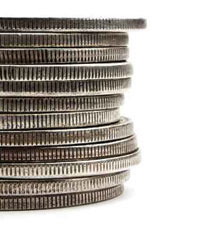
RESOURCES / Definitions
Asset bubble: An asset bubble is formed when the prices of a specific asset class (e.g., real estate) are over-inflated due to excess demand often caused by low interest rates and an over expansion of the money supply. Prices rise quickly over a short period of time and are not supported by underlying value fundamentals.
Basel 3 Accord: The Basel accords are set by a committee of the Bank for International Settlements (BIS) headquartered in Basel. It is a sort of Central Bank of central banks globally. Basel III is the latest set of standards and practices created to try and ensure that international banks maintain adequate capital to sustain themselves during periods of economic strain.
Deleveraging: The process of reducing the level of debt by selling assets. A deleveraging economy is when most are trying to do this at the same time because aggregate debt levels are too high. This is inherently impossible or at least highly difficult as each sale also demands a buyer thus rapidly lowering prices. Economies find it very hard to get out of these conditions which create strong recessions verging on depressions.
Deposit creation: In the fractional reserve banking system (see below) when a bank wishes to make a loan to someone, it simply creates the amount of the loan in that individual's account, which is called deposit creation. The bank only needs about 10% of the loan as reserve (see below) and is totally balanced by this action. For example, to make a $10,000 loan, it needs $1,000 in reserves and then creates a $10,000 loan contract, which is an asset, and a $10,000 deposit, which is a debit – and everything is balanced. If there were only 1 bank in the country, then 90% of this loan would constitute new money creation, but as there are thousands of banks, only a smaller portion of this actually constitutes newly created money.
Dodd-Frank: The US Dodd–Frank Wall Street Reform and Consumer Protection Act was signed into federal law by President Barack Obama in 2010. Passed as a response to the late-2000s recession, it brought the most significant changes to financial regulation in the United States since the regulatory reform that followed the Great Depression. It made changes in the American financial regulatory environment that affect all federal financial regulatory agencies and almost every part of the nation's financial services industry.
ECB – European Central Bank: The Central Bank of the 17 member states of the Eurozone (not to be confused with the European Union, consisting of 27 members).
Fiscal: Referring to government revenue and expenses. This is distinct from monetary (see below).
Fractional reserve banking: A banking system in which only a fraction of bank deposits are backed by actual cash-on-hand or in deposits at the national central bank. Therefore all deposits are not available for withdrawal leading to bank runs if confidence in the bank is lost and too many depositors demand their money back at the same time. Most countries operate under this type of system.
Glass-Steagall: The term often used to refer to the whole US Banking Act of 1933 which, among other provisions, separated the functions of investment banks from depository (or commercial) banks. Starting in the 1960's this division was gradually relaxed, and then formally repealed under President Clinton in 1999. Many believe that this was a major cause of the following Great Recession.
GDP or Gross Domestic Product: The value of all finished goods and services produced within a country including all exports minus imports.
Monetary and monetary/banking: Relating to money or currency. This is distinct from "fiscal" (see above). In this website at times we use the term monetary/banking as the creation of money has been relegated to the banking industry in most countries by legislation. This is done through the contracting of debt by borrowers borrowing from banks whereby a portion of each loan is formed through deposit creation (see above).
Reserves: The amount of money a bank has in its vault plus deposits at the Central Bank.
Quantitative Easing: This is the action of central banks buying financial assets from commercial banks and thus increasing their reserves with the central bank in the hope that this would get the banks to lend more money. This is done when normal monetary policy is not working properly. It rapidly loses its effectiveness after an initial period of time.
Seigniorage: Seigniorage is the difference between the cost of creating money and its actual value, e.g., if it costs 1¢ to print a $1 bill, then the seigniorage is 99¢.
Sovereign debt: This is government debt, also known as public debt or national debt, and is the debt owed by a central government. By contrast, the annual government deficit refers to the difference between government receipts and spending in a single year, that is, the increase of debt over a particular year.